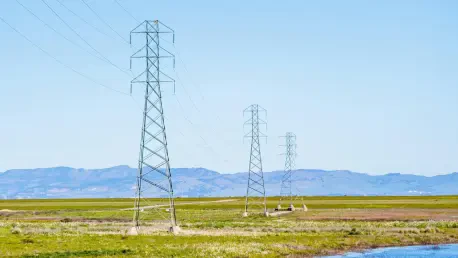In recent years, the renewable energy sector has emerged as a transformative force within the global energy landscape, driven by technological innovations and increasing commitments to sustainability. This constantly evolving industry holds immense potential, but it also brings with it a complex set of challenges. Understanding these challenges is crucial for stakeholders, from investors to operators, who face a rapidly shifting terrain in the pursuit of cleaner energy solutions.
Exploring Renewable Energy Technologies
Renewable energy technologies are fundamentally altering the way energy is produced and consumed. These technologies, including solar and wind power, rely on sustainable resources that are naturally replenished, mitigating the environmental impact seen in conventional energy production. The development of these technologies has been motivated by the global demand for greener energy solutions, following international efforts to combat climate change and reduce carbon footprints. The importance of understanding their complexities is highlighted by the widespread industry adoption and integration into national energy grids, signaling their significance.
The surge in renewable technologies is interlinked with broader technological advancements, such as battery storage and smart grid applications. These advancements provide improved efficiency, energy management, and integration support, creating a more resilient energy system. The wide applicability of renewable technologies across various sectors further asserts their role in reshaping the energy landscape.
Features of Solar and Wind Energy Technologies
Understanding Solar Energy Systems
Solar energy technology operates by capturing sunlight through photovoltaic cells, which convert solar radiation into electricity. This process, driven by the principles of the photovoltaic effect, has seen advances in efficiency rates and production costs. Modern solar technologies now offer higher energy yields even in less-than-ideal conditions, positioning solar power as a key player in meeting future energy demands. The adoption of solar energy systems globally highlights their role in reducing reliance on fossil fuels.
Insights Into Wind Energy Mechanisms
Wind energy technology capitalizes on the kinetic energy from wind, channeled through turbines to generate electricity. Recent advancements in turbine design have enhanced performance and lowered costs, making wind energy increasingly competitive. The ability to scale wind farms and the development of offshore projects have broadened their application, contributing to a sustainable energy mix. The consistent growth in wind generation underscores its potential to meet both current and future electricity needs efficiently.
Advances and Trends in Renewable Energy
The renewable energy sector continually experiences rapid advancements, with new technologies and methodologies regularly emerging. Innovations such as bifacial solar panels, floating solar, and offshore wind farms showcase the industry’s ingenuity and dynamism. These developments not only improve energy production but also enable broader application possibilities. The industry’s trajectory is marked by an accelerated embrace of new ideas, reflecting an eagerness to optimize and expand renewable energy capabilities worldwide.
Significant shifts in consumer behavior and industry demands are reshaping renewable energy’s direction. The increasing emphasis on energy independence and resilience is encouraging exploration and implementation of decentralized energy systems. These trends denote a proactive approach in addressing the ever-growing need for sustainable energy solutions, leading to continued growth and adaptation in the sector.
Real-world Applications of Renewable Technologies
Renewable energy technologies are being integrated extensively into various industries, significantly transforming traditional energy structures. From powering industrial factories to fueling the logistics and transportation sectors, renewables provide versatile solutions that complement existing infrastructures. Furthermore, large-scale projects such as solar farms and wind power installations exemplify their potential to meet national energy requirements and contribute to economic growth.
Innovative applications, including microgrids and community-based power systems, highlight unique use cases that promote localized energy independence. These implementations foster security and reliability, especially in regions prone to natural disasters or remote areas with limited grid access. Such diverse applications enable societies to harness sustainable energy more effectively, illustrating the tangible impact of renewable technologies in real-world scenarios.
Addressing Challenges in the Renewable Sector
The transition to renewable energy technologies is not without its challenges. One of the foremost obstacles is the rapid pace of technological advancements, which brings uncertainty regarding the longevity and reliability of new equipment. Concerns surrounding manufacturing transparency, quality control, and overall resilience demand meticulous attention from industry participants. As illustrated by cases of equipment failures, such as turbine quality issues, these risks necessitate diligent risk assessment and management strategies.
Regulatory frameworks and market conditions also play significant roles in renewable energy adoption. Establishing robust policies that support innovation while ensuring safety and reliability is essential for fostering sector growth. Collaborative efforts between governments, industry groups, and technology providers are needed to develop solutions that address these challenges effectively, supporting progress.
Future Directions for Renewable Energy Technologies
The future of renewable energy technologies holds immense promise characterized by sustained innovation and increasing integration across various sectors. Anticipated advancements could further boost efficiency, durability, and scalability, fostering broader adoption. A strong focus on research and development will likely lead to breakthroughs that enhance the competitiveness of renewable solutions, fortifying their role as the cornerstone of a sustainable energy future.
As the industry navigates complex challenges, collaboration among stakeholders becomes imperative. Sharing knowledge, expertise, and resources can accelerate progress and offer pathways to overcome barriers. Strategic partnerships and investments will play pivotal roles, ensuring a vibrant and resilient renewable energy landscape that meets contemporary demands and future aspirations.
Summary of Key Findings
The drive towards renewable energy technologies has established a new paradigm fraught with both opportunities and obstacles. These technologies have shown tremendous potential, offering innovative solutions to pressing global challenges, such as climate change and energy security. However, as the renewable energy landscape continues to evolve, the sector must remain vigilant in anticipating and mitigating risks associated with rapid technological change.
The proactive engagement of industry partners and continuous innovation are instrumental in achieving long-term sustainability and stability. By fostering an environment conducive to technological advancement and effective risk management, renewable energy can maintain its trajectory as a central pillar of future global energy solutions. The integrated approach to tackling challenges ensures that the sector aligns harmoniously with societal goals, paving the way for a greener, more sustainable future.









